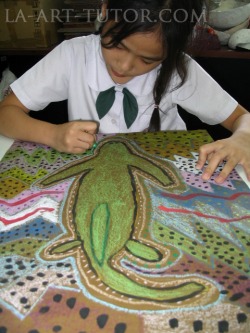Linking Visual Literacy: Information Texts to the English Essential Learnings
| visual_literacy_essential_learnings.docx |
(Queensland Studies Authority, 2007)
Above are the possible English Essential Learning’s that could be used to inform Visual Literacy Information Texts in the classroom. The above outcomes are very broad, and the learning manager would need to select the outcomes that they were going to achieve depending on the angle they would be looking at teaching. If a unit of work were to be created based on advertising, then a more critical and analysis base of outcomes would need to be achieved. If the learning were to be based around interpreting and recognising signs and symbols, then the outcomes would be more about drawing on prior knowledge to connect to the visual stimulus.
It is difficult to depict specific Essential Learning’s without a unit of work in mind. It would depend on the group of students and the unit of work that was being taught. Students need to understand that visual literacy provides information for the learners to connect to so that the learning becomes more concrete and links can be made to assure that the learning can be cognitive.
An example could include, a year five class analysing a piece of Aboriginal artwork. They would need to look at the signs and symbols used, and then decide on the message that is shown. They could then use their knowledge gained of the meaning of the signs and symbols to create their own Aboriginal art story.
LINKS TO ESSENTIAL LEARNINGS
Ways of Working: Interpret how people, characters, places, events and things have been represented and whether aspects of the subject matter have been included or excluded.
Knowledge and Understanding - Reading and Viewing: Readers and viewers use a number of active comprehensive strategies to interpret text, including activating prior knowledge, predicting, questioning, identifying main ideas, inferring, monitoring, summarising and reflecting.
Knowledge and Understanding - Writing and Designing:Words and phrases, symbols, images and audio affect meaning and interpretation.
Knowledge and Understanding - Literary and Non-Literary Texts: Texts represent Aboriginal and Torres Strait Islander knowledges, peoples, places, events and things in a different way.
ACTIVITY
Above are the possible English Essential Learning’s that could be used to inform Visual Literacy Information Texts in the classroom. The above outcomes are very broad, and the learning manager would need to select the outcomes that they were going to achieve depending on the angle they would be looking at teaching. If a unit of work were to be created based on advertising, then a more critical and analysis base of outcomes would need to be achieved. If the learning were to be based around interpreting and recognising signs and symbols, then the outcomes would be more about drawing on prior knowledge to connect to the visual stimulus.
It is difficult to depict specific Essential Learning’s without a unit of work in mind. It would depend on the group of students and the unit of work that was being taught. Students need to understand that visual literacy provides information for the learners to connect to so that the learning becomes more concrete and links can be made to assure that the learning can be cognitive.
An example could include, a year five class analysing a piece of Aboriginal artwork. They would need to look at the signs and symbols used, and then decide on the message that is shown. They could then use their knowledge gained of the meaning of the signs and symbols to create their own Aboriginal art story.
LINKS TO ESSENTIAL LEARNINGS
Ways of Working: Interpret how people, characters, places, events and things have been represented and whether aspects of the subject matter have been included or excluded.
Knowledge and Understanding - Reading and Viewing: Readers and viewers use a number of active comprehensive strategies to interpret text, including activating prior knowledge, predicting, questioning, identifying main ideas, inferring, monitoring, summarising and reflecting.
Knowledge and Understanding - Writing and Designing:Words and phrases, symbols, images and audio affect meaning and interpretation.
Knowledge and Understanding - Literary and Non-Literary Texts: Texts represent Aboriginal and Torres Strait Islander knowledges, peoples, places, events and things in a different way.
ACTIVITY



